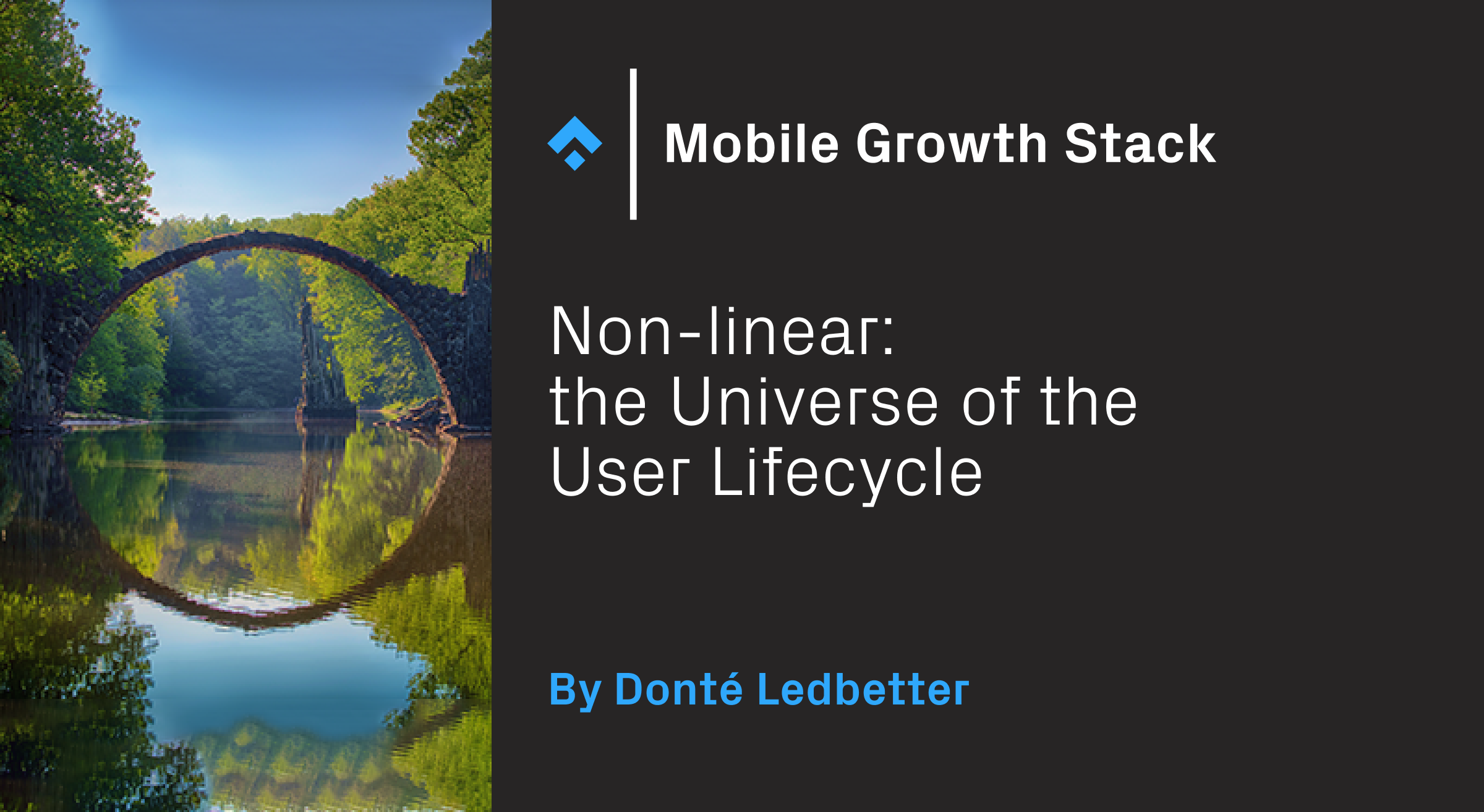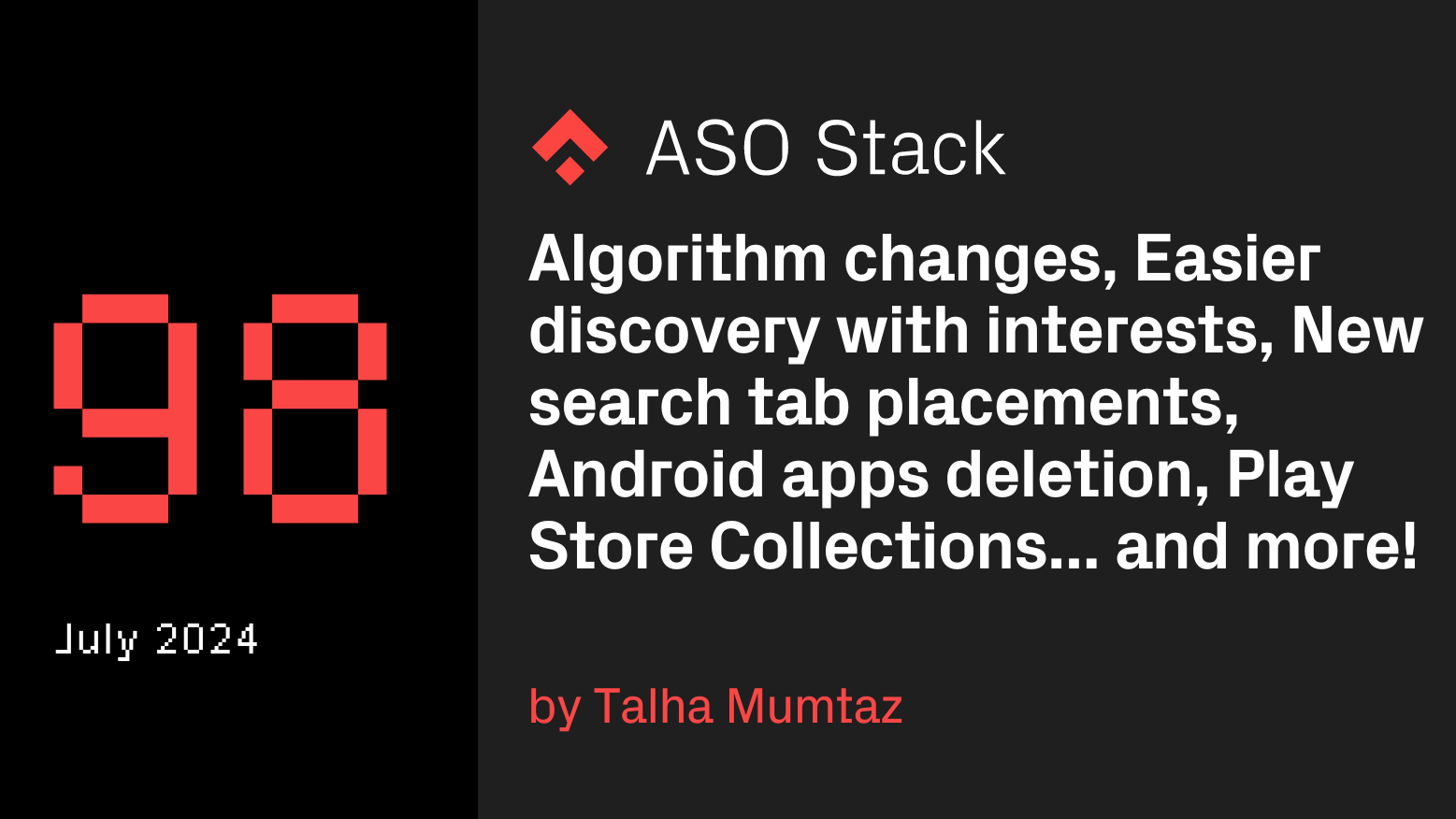
To call Donté Ledbetter, Senior CRM Manager and Lifecycle Manager at Yousician, an expert in the art of the user lifecycle would be an understatement. Having worked with CRM over the course of the last ten years, Donté specializes in customer-driven and data-driven CRM management with emphasis on the user lifecycle. His current role at Yousician, a Finnish music learning platform, finds him embarking on a new task: creating a CRM strategy from scratch. Over some coffee and a six-hour time difference in New York, Donté sat down with the Mobile Growth Stack to talk about what the user lifecycle actually means, how teams can use it, and what the future holds for CRM managers.
Hey Donté. Let’s start off by getting to know who you are.
Of course! So I’ve been in mobile for basically my whole career. I started at a small ad tech company in New York, and then started working for Braze, which used to be AppBoy. And that’s sort of where I sort of started learning the ropes around the user lifecycle and retention. After that, I moved on to the B2C side of things at Stash, a FinTech company in the US, basically working on those two things.
At the beginning of the year, I started working for Yousician, a platform that provides interactive learning for guitar, piano, ukulele, bass and voice. We gamify the music learning process, making it fun, easy and motivating to learn an instrument regardless of experience level. I’m building a CRM program from scratch, which means everything from figuring out how to retain users to working with product teams, and making sure we have the right messaging in place. Our goal is to set the foundation for the user lifecycle.
A lot of people use the term user lifecycle—it’s certainly one of those terms that you hear over and over again. From your experience working in the user lifecycle and your expertise, what does it mean to you?
So the user lifecycle is traditionally seen as something that’s very linear, right? You have the beginning, where a user installs, after which they get onboarded, choose which features they’d like, and then sign up. But one thing I’ve learned over time in the past couple years is that the user lifecycle isn’t really a linear path—it’s more about a series of moments. And these moments are very sporadic over time, and they happen in a bubble-like way.
The way I approach user engagement is by not trying to create a linear strategy. Rather, I do it by building a strategy around different moments that a user may have at different times. I think a lot of mobile marketers don’t quite see it that way, even though they should—their emphasis is always more linear. But in reality, there’s no end to the user lifecycle. I mean, of course, the user can uninstall your app. But it’s not an official end. Even if they uninstall, they can come back at any time—there’s really no end to these lifecycles once they are in your ecosystem. That’s why it’s better to look at it as a series of moments.
It does indeed seem like the user lifecycle term itself suggests that there’s a finite point to it. What can CRM teams learn from looking at the user lifecycle as a continuous, opposed to linear, process?
I think a lot of CRM managers should really focus on sending messages based on moments, and creating an open line of communication. It’s sort of like having a relationship in a way—a friendship, or even a romantic relationship—where you’re communicating based on what is going on at a particular time. That kind of communication should never end. Think about onboarding: even though certain phases in the user’s lifecycle may end—with onboarding, it can be 30 days—communication needs to continue to keep your brand top of mind for the user.
At Yousician, specifically, we actually take a coaching approach, but from a CRM perspective. If you think about a coach on a basketball team, what he or she tries to do is bring the best out of you using different tactics—communication tactics, in particular. He or she encourages you to practice. But that process never ends until you stop playing. It’s the same with CRM: you really have to know your users—like a coach with his athletes—to get them to an ideal state.
I think from a CRM manager’s perspective, you should continuously be trying to learn about your users: trying to learn what they like, what they don’t like. That also means constantly doing surveys, qualitative feedback, quantitative feedback, and optimizing your messages. You should see your relationship not as something that is gonna end or that is finite, but something that you nurture over time.
But what about friction points? These can happen at several stages of the user lifecycle, especially in the onboarding phase. How do you deal with them?
There is certainly a specific friction point in the beginning of the lifecycle, and it’s something we’ve been working on at Yousician. So we have a feature in our platform called practice mode, which is essentially a way to slow down the music that the user is learning—some songs are really difficult to play if you’re a beginner. But interestingly, a lot of users don’t really know that practice mode exists. Right now, the product team is working on updating that. But what we really try to hammer from a CRM perspective is the value of practice, and the value of slowing things down. We try to reinforce that specific feature, because our data has shown that once a user starts using practice mode, they’re more likely to advance different levels, and are more likely to subscribe. They’re also less likely to churn. It’s such a small feature, but it’s a key feature in the user life span. It’s a great way to smoothen out a friction point that reassures users that they can achieve their goal—even if the song is difficult.
What about friction points on the retention side of things? What have your observations been about winback across your career?
Let me just preface this by saying that there are a lot of reasons why people stop using things. First of all, contrary to what some mobile marketers think, there’s life that happens, and a user will stop using the app because they don’t have time. And we respect that. At Yousician, that’s definitely one of the most common reasons why people tell us that they’ve stopped using the platform. But then again, it’s somewhat like life, too: if you really want to do something, then you can always find time to do it. From a CRM perspective, that means thinking about communicating with users when they have time to pick up their instrument and play again. The data we have suggests that most people start playing in the evening, or on the weekend. Once you know that, we try to use timing as an opportunity to send different messaging and reminders at specific points in the day according to our data.
But then comes the monetary aspect. Here, a lot of people will say, “well, I don’t want to pay for it,” or “I don’t want to pay the full price for it.” That’s when your discount strategy comes into play, and I’ve used it not only at Yousician, but at Stash as well, where we knew that users were especially price-sensitive. I think a lot of mobile marketers are somewhat hesitant with the discount strategy. But think about it this way: even if we discount our product, we’re still getting users that we wouldn’t have gotten otherwise, especially when it comes to winning back people early on. What we tend to see is that users will take a free trial, and then they’ll cancel the trial because they don’t want to pay. That’s also a great moment to use the discount card—users definitely stick around more like that. So somewhat like activation, it’s important to think about winback not only at the end of the lifecycle, but at the beginning, when they start to fall off earlier on.
What’s the biggest piece of advice you can give managers who are working with the user lifecycle?
Well, I think the biggest advantage I’ve noticed is really having collaboration across product, marketing and data. That’s nothing new—but people often say they’re doing it when they’re actually not. One of my best experiences was at Stash, where we relied on data scientists to build predictive models based on data to trigger different messages. So for example, when I was working on Stash’s banking product, I collaborated with data scientists to create a personalized, triggered message to help users who visited ATMs frequently discover Stash’s fee-free ATM feature. And that actually showed a significant lift, as well as people opening bank accounts. At Yousician, I’m trying to get to the same point where you can use data science and predictive models to automate things—and that only really happens with good collaboration among product and data scientists. So if you take a collaborative approach, and if you work together to understand what users want, and not really work in silos, I think your CRM program will be better off, your product will be better off, and your user lifecycle will be much clearer.
What about for CRM managers or mobile marketers overall?
One thing I find interesting is the development of CRM as a term, because how we use the term today is actually a new concept. In the 2000s, it meant things like Salesforce, and sales in general. But now you have marketers who are working closely with product teams to drive usage in the app. That’s what a lot of CRM managers do, and that’s what I do. And one thing I will say is that there are people who may come from the marketing discipline or the product discipline, but for the most part, you really have to combine both backgrounds into both roles. What I find is that a lot of marketers are completely detached from the product—they may be doing SEO or social media, but they don’t understand the product. As a CRM manager, you have to understand both sides.
In the next five years, as more companies start to discover the value of mobile CRM, engagement, retention, and value retention, there will be many more positions in these areas. Having a holistic picture is really important to keep in mind for any current or future CRM managers working with the user lifecycle.


















